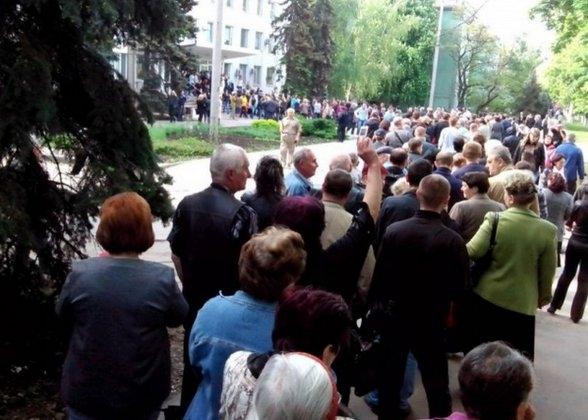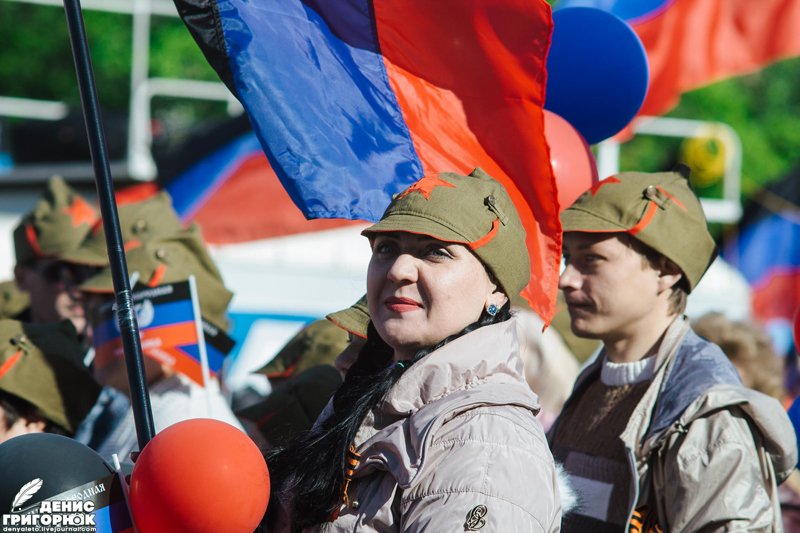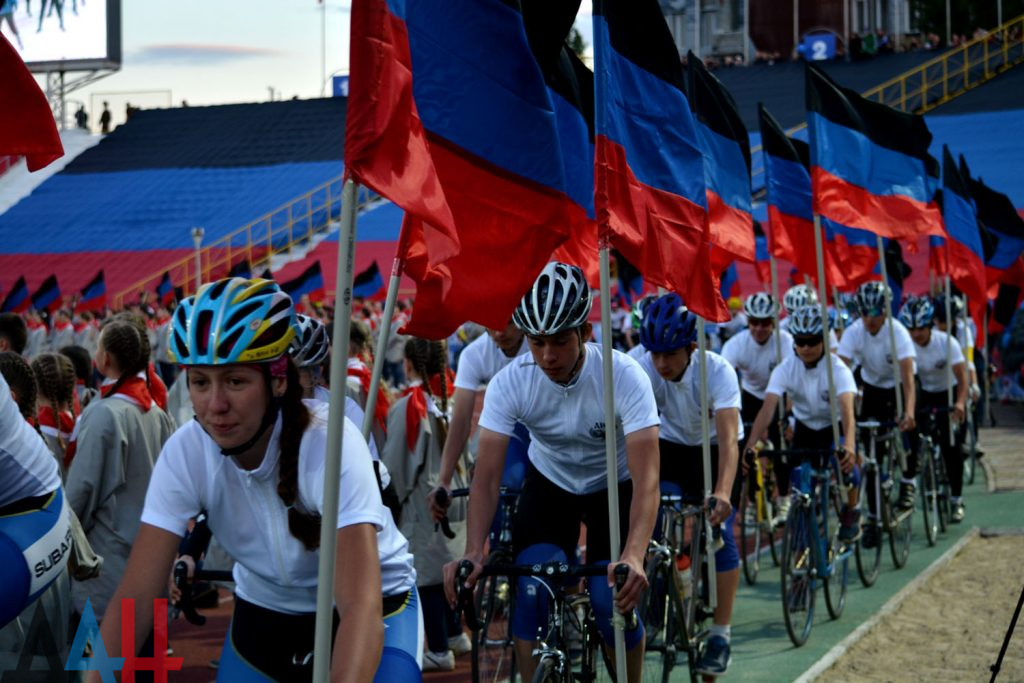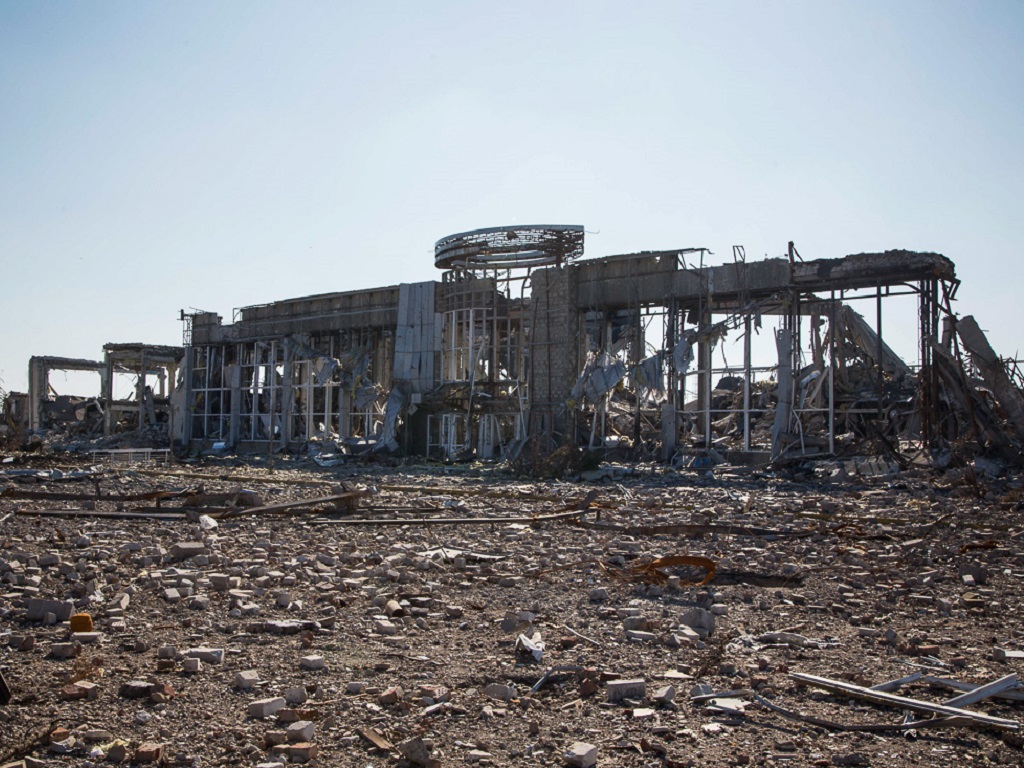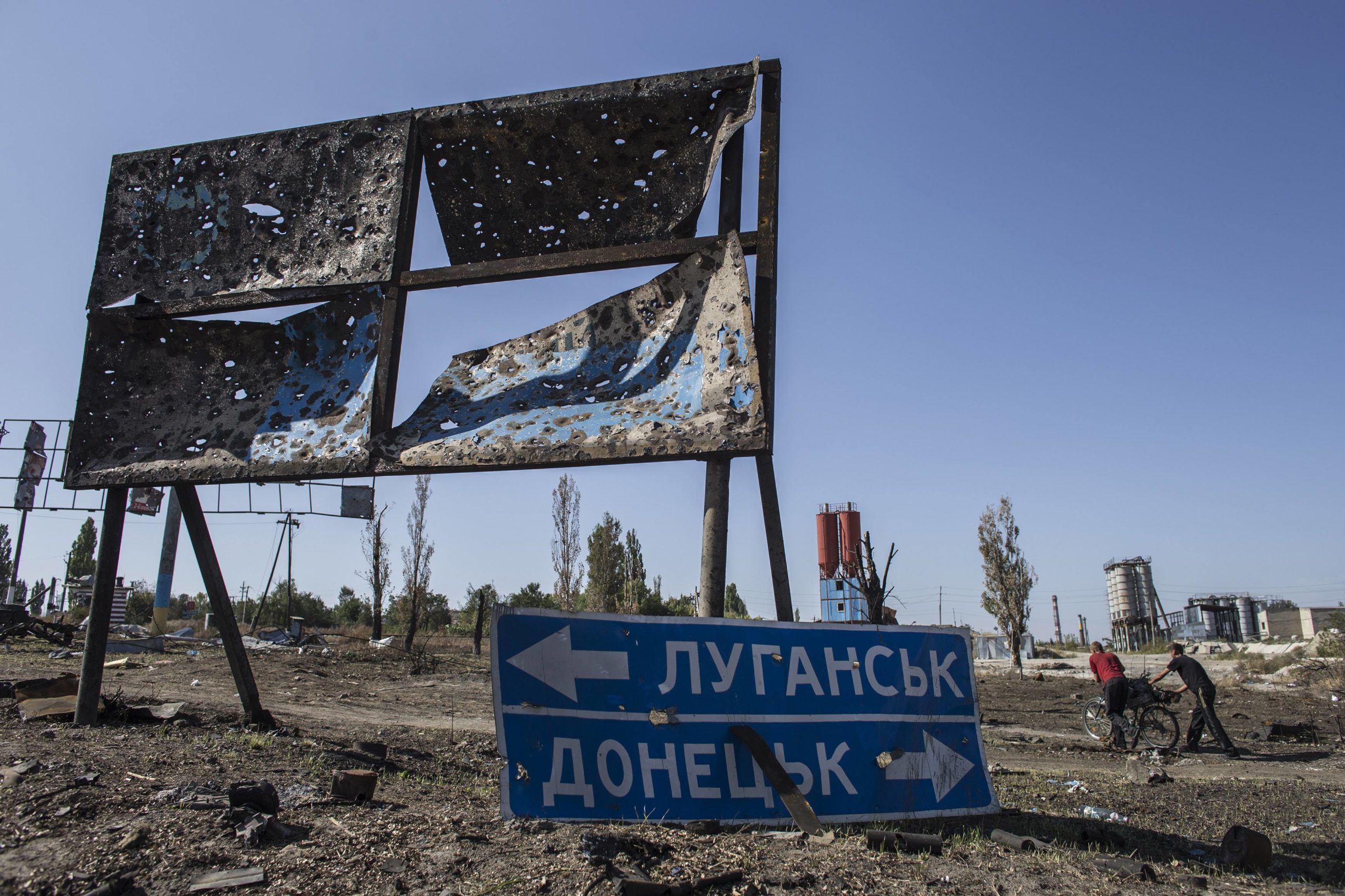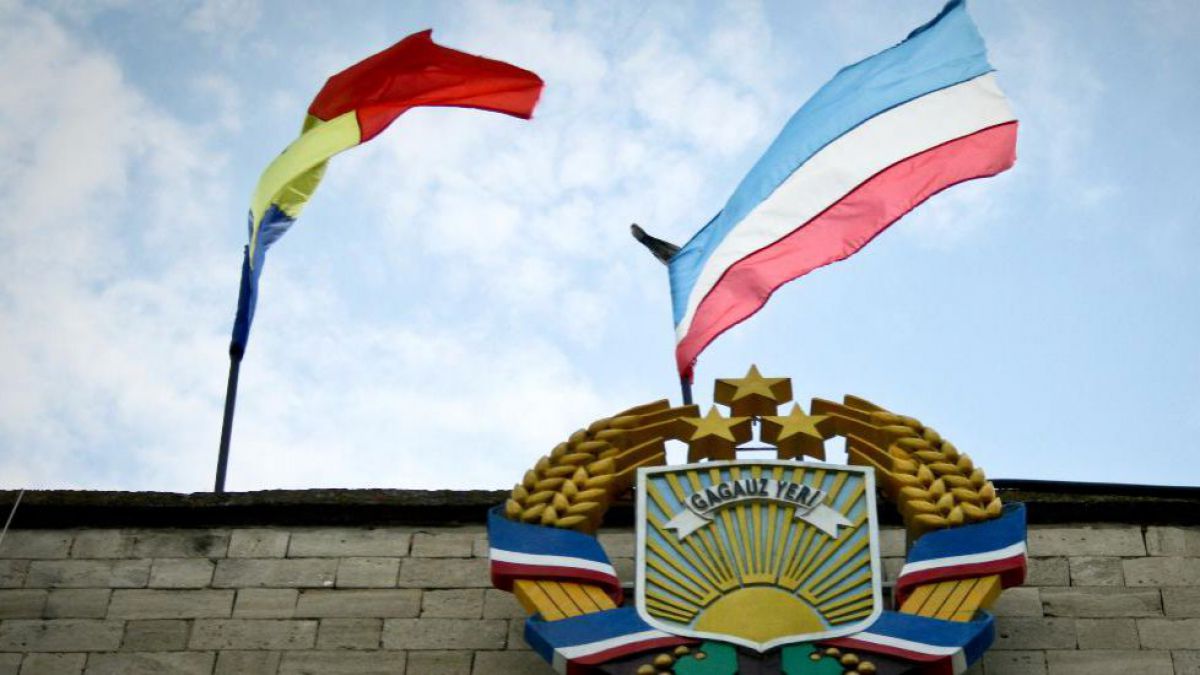Read also: Turchynov: 24% Residents Of Luhansk Oblast and 32% of Donetsk Oblast Voted in So-Called ‘Referendum’
Earlier in April, amid a massive propaganda campaign in Russian media, militants cracked down on dissidents and cleaned up the local information field to not only create the illusion of full support of the Russian aggression in the region but to also influence the worldview of its residents in a way favorable for Russia. In May 2016, many Donetskers and Luhanskers believed the colorful propaganda picture of annexed Crimea on Russian TV, and they believed rumors that fascists from Western Ukraine who failed to get to Crimea are on their way to the Donbas to kill everyone. Ukrainian banks, delivery services, railways, factories, state post service, and treasury were still functioning and people who believed Russia were optimistic of the future. Nobody of them could believe that the unraveling de-facto occupation would lead to the total destruction of normal life in the region, severe economic and social decay, and transport crisis. Meanwhile, trains leaving Donetsk and Luhansk were already crowded by the first wave of internally displaced persons, the Donbas refugees.Celebrating an illusion
The so-called Donetsk and Luhansk people's republics celebrate the days of independence on 11 and 12 May, moving the beginning of their histories to the farse referendum in 2014. The occupation authorities are full of optimism about the future of occupied territories, as are the Russian media and so-called information agencies of Donetsk and Luhansk. The information field in the occupied territory remains under Russian and separatist control since 2014 and serves to generate Soviet-style news about great achievements of wise rulers, about treacherous Ukraine and brotherly Russia.Read also: Only 18% identifies with Kremlin-backed “DNR” – survey (2016)
Grim reality
No real country recognized Russian puppet statelets in the Donbas since 2014 referendums. Only one of Russia's post-Soviet puppet states, South Ossetia, recognized both Luhansk and Donetsk "people's republics." In 2008, Russia recognized the independence of South Ossetia, one of Russia's frozen conflict zones in Georgia. Now South Ossetia intermediates between Russia and Donbas puppet states to make economy operations between Russian companies and breakaway Ukrainian regions legal in Russia.Read more: Russia’s involvement in Donbas war open secret in Donetsk – France 24
Most of the factories operating in 2014 are either closed down or cut back on production. Two months ago, occupation authorities seized the last normally operating enterprises which remained under Ukrainian jurisdiction in the occupied territory, most of the grabbed assets are idling as of now, workers are on paid leave. The economy of the occupied regions fully depends on Russia which sends humanitarian convoys and pays the salaries and pensions of people who live in the occupied territories. The attempts to entice investors and organize tax collection failed. The Russian-backed leaders continue to talk about the unshadowing of the economy while enclaves' economies remain based on small-scale trading and smuggling. No real bank operates in the occupied territory. Russian banks didn't enter the occupied region, occupation authorities opened so-called republics' banks using the stolen equipment of deserted bank offices. Point-of-sale terminals are widely used for cashing out money but it is next to impossible to open a bank account, transfer or receive money, buy something online. No Ukrainian and international delivery services remained in the occupied territory. An attempt to send or receive something is kind of a challenge for a resident of occupied areas. So-called Post of LNR and Post of DNR deliver letters and packages only within the occupied territories, you cannot even send a letter to Russia. There is no passenger transport but busses, marshrutka minibusses, and several suburban trains. Russian-hybrid troops destroyed both passenger airports in the region in 2014-2015. Ukrzaliznytsia (Ukrainian railways) suspended passenger service in the occupied territories in July 2014.No real employment opportunities are accessible for residents of the Russia-controlled territories. First of all, you can become a militant, it is the most gainful employment possible. If you don't want to fight against Ukraine, you can become a marketeer or obtain any other unskilled job. The third way is to seek for seasonal employment in Russia.#Luhansk, empty #railway station @24todaynetua https://t.co/9OioZwsI9M pic.twitter.com/hcNOgT2g0I
— English Luhansk (@loogunda) October 22, 2016
- A guide to Russian propaganda
- Stages of Russian occupation in a nutshell
- Russia orchestrating Donetsk “referendum”
- Donetsk workers forced to sign “referendum” petitions
- Separatists: Donetsk Oblast Status the Same Post-Referendum
- ‘Referendums’ turnout: 10% of voters
- “DNR’s” propaganda apparatus exposed. Part 1: “Russophobe, get him out of Donetsk”
- “DNR’s” propaganda apparatus exposed. Part 2: How “DNR” censored Ukraine’s leading TV channels
- Why Ukraine must avoid the Transnistrian scenario
- The Kremlin’s five steps towards recognizing “DNR/LNR”
- Policy shift shows Russia preparing to recognize its puppet republics in Donbas
- Occupied Donbas risks becoming like South Ossetia
- Russian proxy republics campaign to “reunite people of Donbas” and other political developments in the “LNR” and “DNR”
- 5 explanations for the Russian “Kyiv junta” myth
- Don’t call terrorists in eastern Ukraine “rebels” because they are not








